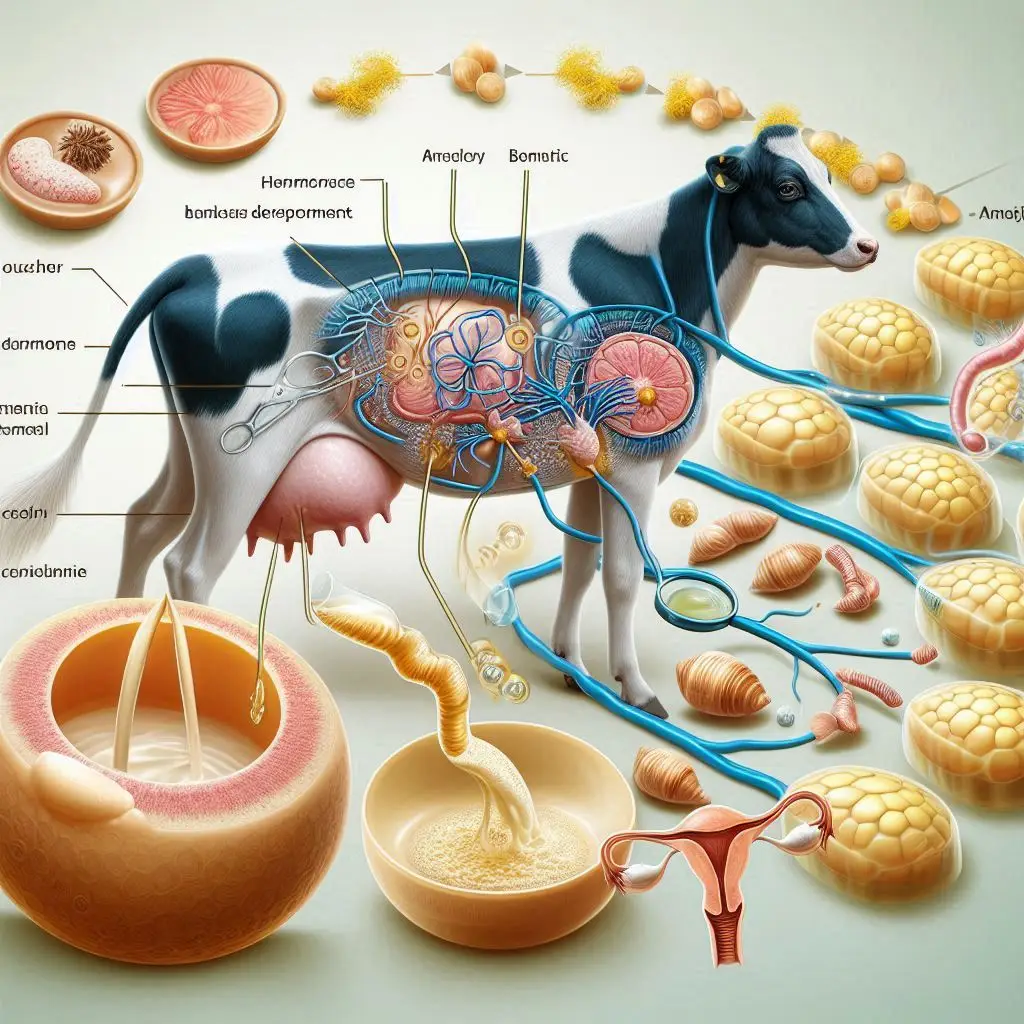Hormonal Control of Milk Ejection

Introduction
Milk ejection is a vital process in lactating animals. It ensures that offspring receive the necessary nutrition for growth and development. This article delves into the hormonal mechanisms that control milk ejection, focusing on oxytocin and prolactin, their functions, and the neuroendocrine pathways involved.
Understanding Lactation
Lactation is the biological process through which mammals produce milk. This process is not only crucial for feeding young but also has significant implications for animal husbandry and dairy production.
The Importance of Milk
Milk provides essential nutrients, including proteins, fats, vitamins, and minerals. Understanding how milk is produced and ejected can help improve dairy farming practices. For more insights on the nutritional value of milk, see this article on the benefits of milk.
Overview of Lactation Phases
- Mammogenesis: Development of mammary glands during pregnancy.
- Lactogenesis: Initiation of milk production.
- Galactopoiesis: Maintenance of milk production.
- Milk Ejection Reflex: The actual release of milk during suckling or milking.
The Role of Hormones in Milk Ejection
Oxytocin: The Key Player
Oxytocin is a hormone produced in the hypothalamus and released by the posterior pituitary gland. It plays a crucial role in the milk ejection reflex.
Mechanism of Action
When a calf suckles, sensory nerves in the teat send signals to the brain, prompting the release of oxytocin into the bloodstream. This hormone causes myoepithelial cells around the alveoli to contract, pushing milk into the ducts and out through the teat.
- Triggering Factors: Suckling is not the only trigger; even sounds or sights associated with feeding can stimulate oxytocin release.
- Impact of Stress: Stress can inhibit oxytocin release, affecting milk ejection efficiency. For more details on stress effects on lactation, check out this resource on stress management in dairy cows.
Prolactin: Supporting Milk Production
Prolactin is another hormone essential for lactation. While it primarily stimulates milk production, it also plays a role in preparing mammary tissues for milk synthesis.
Functions of Prolactin
- Stimulates Alveolar Development: Prolactin promotes the growth of alveoli where milk is produced.
- Regulates Milk Volume: It helps maintain adequate milk levels during lactation.
Interaction Between Oxytocin and Prolactin
Both hormones work synergistically to ensure successful lactation. While prolactin increases milk production, oxytocin facilitates its ejection.
Neuroendocrine Control of Milk Ejection
The Neuroendocrine Reflex Arc
The process of milk ejection involves a neuroendocrine reflex arc that connects sensory input from suckling to hormonal output.
Components of the Reflex Arc
- Sensory Neurons: Detect stimulation on the teat.
- Hypothalamus: Processes sensory information and triggers hormone release.
- Pituitary Gland: Releases oxytocin into circulation.
Feedback Mechanisms
The body employs feedback mechanisms to regulate hormone levels during lactation. For instance, increased suckling leads to more oxytocin release, enhancing milk flow.
Factors Influencing Milk Ejection
Environmental Conditions
Stressful environments can inhibit oxytocin release and affect overall milk production. Ensuring a calm environment during milking can enhance productivity. Read more about creating a stress-free environment in this article on dairy cow welfare.
Health Status
Infections or diseases affecting the mammary gland can disrupt normal hormonal functions, leading to reduced milk yield.
Nutrition
Proper nutrition supports hormonal balance and overall health, influencing both prolactin and oxytocin levels. For nutritional guidelines for dairy cows, see this resource on dairy cow nutrition.
Practical Applications in Dairy Farming
Improving Milking Techniques
Understanding hormonal control can help farmers optimize milking techniques to enhance efficiency. For example:
- Regular Milking Schedule: Establishing a consistent milking routine can improve oxytocin response.
- Calm Milking Environment: Reducing stress during milking enhances hormone release.
Hormonal Treatments
In some cases, hormonal treatments may be used to boost milk production or manage lactation issues. However, these should be approached cautiously and under veterinary guidance.
Conclusion
The hormonal control of milk ejection is a complex interplay between various hormones, primarily oxytocin and prolactin. Understanding these mechanisms not only benefits animal welfare but also enhances dairy production efficiency.
More from Veterinary Physiology:
https://wiseias.com/pancreas-in-animals/
https://wiseias.com/parathyroid-glands-in-animals/
https://wiseias.com/ovaries-in-animals/






Responses